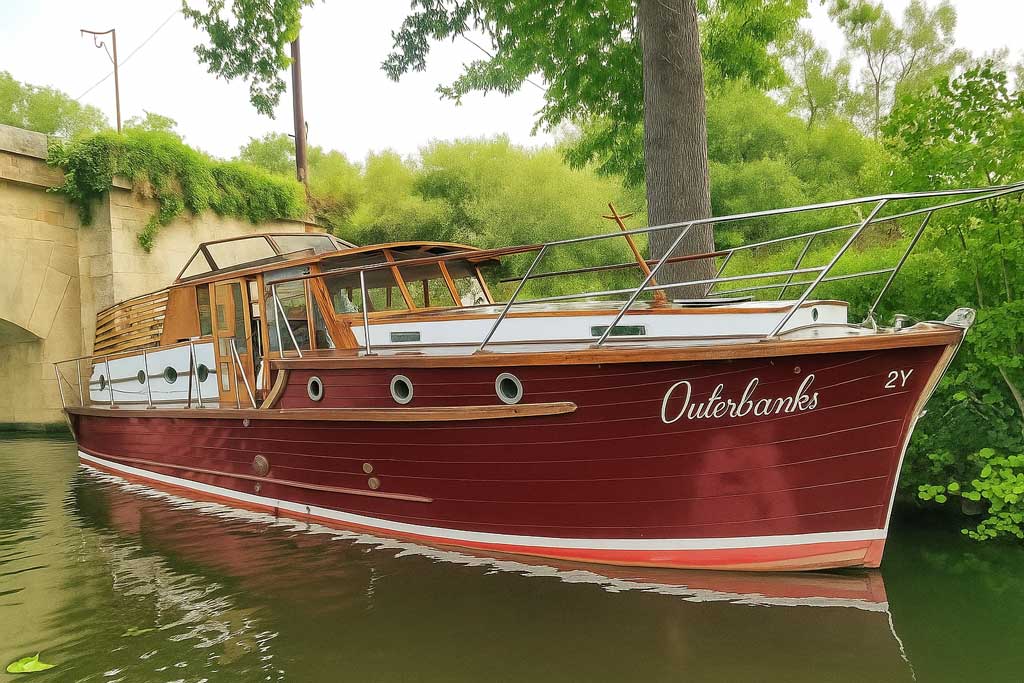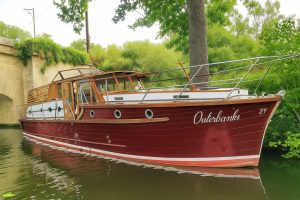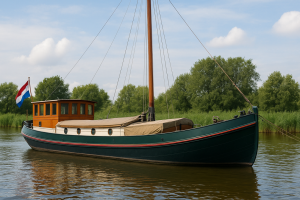When a cherished 1970s motor cruiser arrived at our workshop last spring, she looked every bit the elegant vessel her owners remembered from decades of family adventures. But beneath her glossy exterior lay a story that’s all too common with older fibreglass boats: unseen structural issues that could compromise both safety and longevity. This is where modern non destructive testing techniques proved invaluable in preserving a piece of maritime heritage whilst ensuring the vessel’s integrity for years to come.
The Challenge of Restoring Vintage Fibreglass Boats
The 32-foot cruiser had been lovingly maintained by her original owners for nearly four decades, but age inevitably takes its toll on fibreglass construction. Whilst the gelcoat appeared sound and the boat had been stored under cover, our initial survey raised concerns about potential moisture ingress and delamination—particularly around stress points such as the keel and hull-to-deck joint.
Traditional investigation methods would have required removing sections of the gelcoat or even drilling inspection holes, potentially causing more damage than they revealed. For a vessel of this vintage and sentimental value, such invasive techniques simply weren’t acceptable.
How Non-Destructive Testing Revealed Hidden Issues
During the refurbishment, non-destructive testing was carried out to detect hidden delamination in the fibreglass laminate without removing the gelcoat. Using ultrasonic testing equipment, we methodically scanned the entire hull, deck, and structural components. This technology works by sending sound waves through the laminate, which bounce back differently when they encounter voids, delamination, or moisture-saturated areas.
The results were illuminating. Whilst much of the hull remained structurally sound, we identified three areas of concern: minor delamination around the transom, moisture accumulation in the forward cabin sole, and separation between laminate layers near a previous through-hull repair.
Understanding Delamination in Fibreglass Boats
Delamination occurs when the layers of fibreglass cloth and resin begin to separate, often due to moisture penetration, impact damage, or simply the effects of time and flexing. Left untreated, these areas weaken progressively and can eventually lead to catastrophic failure.
What makes delamination particularly insidious is that it’s often invisible from the surface. A boat might appear perfectly sound whilst harbouring significant structural compromise beneath pristine gelcoat.
The Refurbishment Process
Armed with precise knowledge of where problems existed—and equally importantly, where they didn’t—we could plan a targeted, efficient restoration. We carefully ground back the affected areas, dried out any moisture, and rebuilt the laminate using modern epoxy resins and fibreglass cloth that matched the original construction techniques.
For the transom area, we removed and replaced the compromised core material, ensuring proper saturation and bonding throughout. The cabin sole required lifting to address the moisture source before rebuilding the structure. Each repair was then faired and finished to match the surrounding surfaces seamlessly.
The Benefits of Modern Testing for Classic Boats
The use of non-destructive testing transformed what could have been a speculative, invasive restoration into a precise, confident rebuild. Rather than making educated guesses about the extent of damage, we had concrete data to guide every decision.
This approach also meant we avoided unnecessary work. Large sections of the hull that appeared questionable proved to be perfectly sound, saving both time and money whilst preserving more of the boat’s original construction.
A Successful Return to the Water
After three months of careful work, the motor cruiser returned to her moorings looking stunning and structurally sound. More importantly, her owners have the confidence that comes from knowing exactly what lies beneath that gleaming gelcoat. Regular monitoring using the same non-destructive techniques will help ensure this classic vessel continues to provide pleasure for another generation.
For anyone considering the restoration of a vintage fibreglass boat, investing in proper testing isn’t just prudent—it’s essential for preserving these floating pieces of history whilst ensuring they remain safe and seaworthy.




